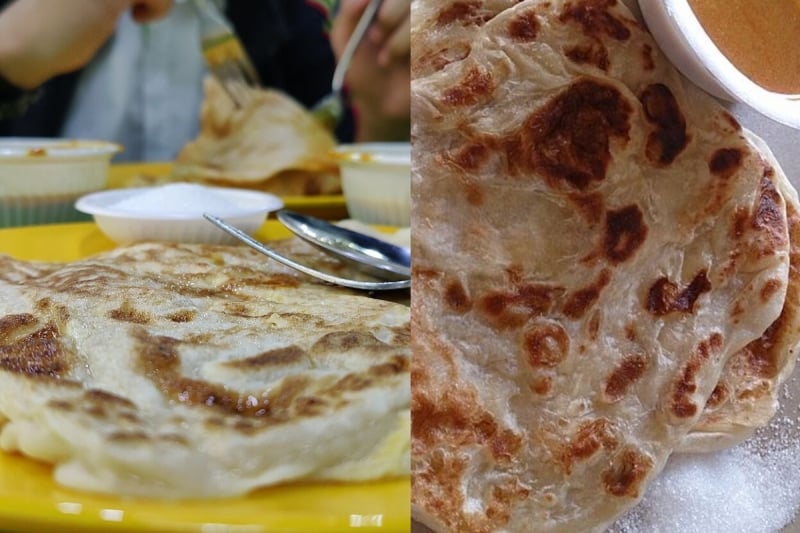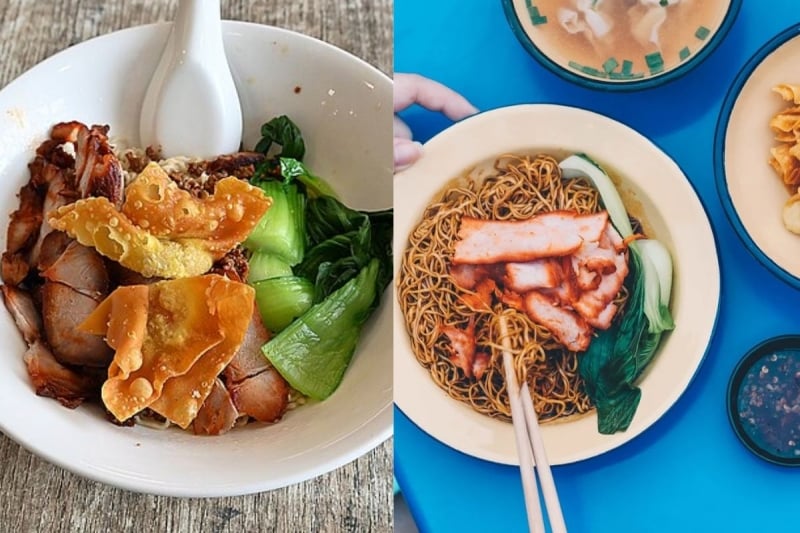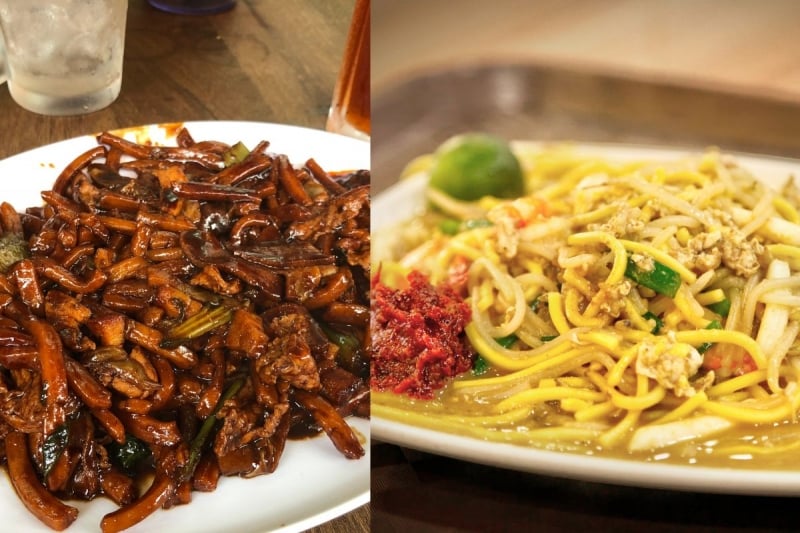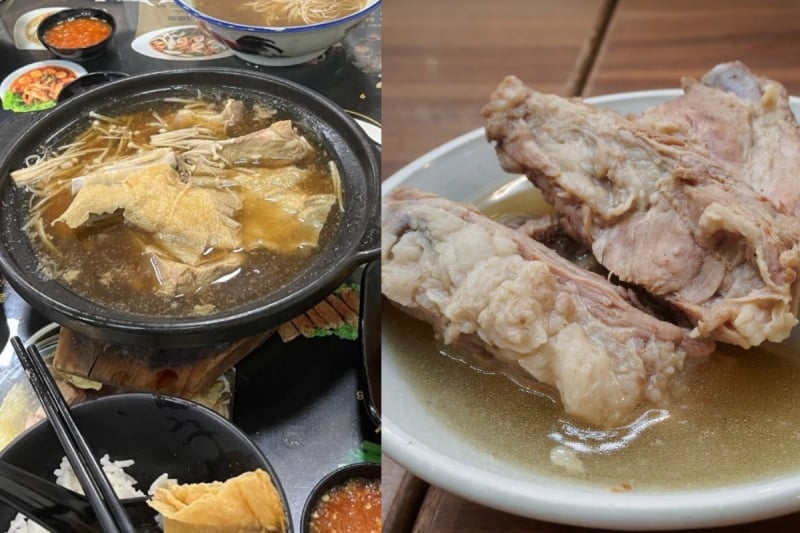Singapore and Johor Bahru (JB) may only be a bridge apart, but their food tells two different stories…or at least, two slightly different versions of the same one. Whether it’s a noodle you know by heart or a breakfast staple you’ve eaten since childhood, chances are JB calls it something else (and maybe even cooks it a little differently).
We’ve all been in that familiar Malaysia versus Singapore food debate. Sometimes it’s playful, sometimes it gets personal. Claims of “ours came first” or “theirs tastes better” get tossed around over late-night suppers and TikTok comment sections alike.
Even the tiniest differences (a darker sauce, a name swap, a heavier hand with the herbs) can feel surprisingly important. So, in the spirit of friendly comparison, here are five dishes that show how even the smallest food differences can reveal a whole world of flavour and habit. Whether they go by different names or taste slightly off from what you’re used to, they say a lot about where (and how) we eat.
Also read: 6 Viral Johor Bahru (JB) Food Spots: Worth the Hype or Overrated?
1. Roti canai vs Roti prata

Image Credit: (L-R) ZanGun via Wikimedia Commons; ProjectManhattan via Wikimedia Commons
It starts with the same base. Dough is flipped until paper-thin, then fried on a hot griddle until golden and blistered. But once you cross the border, this humble flatbread takes on a new name and a slightly different personality.
In JB, it’s roti canai. The texture is flakier, the edges craggier, and the layers more defined. It’s often served with dhal, sambal, or a light curry that doesn’t overpower the bread’s buttery crispness.
In Singapore, it’s roti prata. The shape is usually rounder and more uniform, with a softer, chewier centre. The curry tends to be richer, often fish or mutton-based, and sometimes comes in that signature deep brown gravy you’ll find at your neighbourhood prata joint.
The name difference may come from history. “Canai” is believed to be linked to Chennai, while “prata” is a shorthand for paratha. Both point to the dish’s Indian roots, just filtered through different migration stories.
2. Wanton mee: Heavy vs light

Image Credit: (L-R) Jiao Wo Wan Tan Mee via Google Images; ProjectManhattan via Wikimedia Commons
In Singapore, wanton mee is usually served with thin, springy egg noodles tossed in a light soy-based sauce. It comes with a mix of char siew, boiled wantons, and a small bowl of clear soup on the side. The flavours lean clean and slightly sweet, and the noodles are often blanched just enough to stay firm with a subtle bite.
Head over to JB, though, and the dish takes on a darker, oilier persona. Malaysian-style wanton mee is slick with a thick, caramelised black sauce and often has stronger notes of lard or dark soy. The char siew is sometimes redder and more roasted, and the dish is not usually served with chillis in the noodles themselves.
There are also regional influences at play. Some stalls in JB serve versions that lean more Penang-style, with pickled green chillies or fried wantons, while others add a dollop of chilli paste on the side — a nod to the spicier preferences in certain parts of Malaysia.
Some JB folks call the Singapore version “dry Hong Kong-style noodles.” Meanwhile, Singaporeans might find the JB version a bit jelak. Which one’s better depends on what you grew up eating, or how much sauce you’re craving that day.
Also read: 34 Singlish Phrases to Know Before Visiting Singapore
3. Hokkien mee: Black vs white

Image Credit: (L-R) Zachary79 via Canva Pro; ronniechua via Canva Pro
In Singapore, Hokkien mee is a mix of yellow noodles and thick bee hoon, stir-fried in a rich seafood stock until it soaks up all the prawn and squid flavour. It’s often served slightly wet, with sambal and a squeeze of calamansi on the side. The taste is briny, smoky, and deeply comforting. The messier it looks, the better it usually tastes.
In JB, Hokkien mee usually refers to the KL-style version. This one uses thick yellow noodles fried in a dark, glossy soy sauce. It’s drier, heavier, and clings to every strand with umami-laden depth. Instead of seafood broth, you get crispy pork lard, cabbage, and sometimes bits of pork or squid for texture.
There’s no prawn broth, no calamansi or sambal; just the deep hum of dark soy and wok hei, making the dish more intense and full-on in flavour. Singaporeans expecting something lighter might be surprised.
4. Bak kut teh: Herbal vs peppery

Image Credit: (L-R) Soon Huat Baku Teh Official Facebook Page; YanoStock via Canva Pro
In JB, bak kut teh tends to follow the Klang-style tradition. The broth is dark, herbal, and slightly bitter, brewed with a medley of traditional Chinese herbs like dang gui and tong sum. The result is medicinal and warming — very nourishing for the soul!
In Singapore, the Teochew-style version dominates. The broth is clear, peppery, and garlicky, with a sharpness that hits you right in the throat in the best way. It doesn’t have as much herbal complexity, but it does have that comforting spice that warms the stomach.
The difference in soup colour alone says everything. JB’s is more tea-like, deep and cloudy. Singapore’s is pale but punchy. JB might serve you a youtiao for dipping and a pot of tea on the side. Singapore gives you rice, braised peanuts, and maybe some pig’s intestines if you’re into that (but youtiao is still a must for me).
Chee cheong fun: Curry vs soy sauce

Image Credit: (L-R) Wen Wen Chee Cheong Fun Official Facebook Page; MICDWIM YAINZ RPMMO via Wikimedia Commons
In Singapore, chee cheong fun usually comes sliced and drizzled with sweet sauce and sesame seeds. Some stalls also add a dash of chilli sauce or light soy, but the vibe stays simple and snack-like. It’s soft, slightly chewy, and often eaten as a light breakfast or side dish.
Hop over to JB, and the story changes. Here, chee cheong fun often shows up swimming in curry gravy or paired with a yong tau foo spread. The curry is usually rich and coconutty, sometimes with tofu puffs or long beans thrown in. It’s heartier and more of a full meal than a snack.
Some stalls serve it with chilli oil and pickled vegetables, drawing from other Malaysian regional styles. In general, the JB versions go bigger on savoury and richness.
Also read: Top Lok Lok Supper Spots in Johor Bahru For Singaporean Foodies
Final thoughts
In the grand scheme of things, a noodle is just a noodle. But the way it’s cut or sauced can start a whole debate about who does it better, and the debate starts getting personal for some reason.
That’s because a dish is never just a dish. It represents a memory — what your mum packed for recess, what your family ate after crossing the border, and what feels right when you’re jetlagged at 2 am and craving comfort.
We’ll probably never agree on which version of bak kut teh or wanton mee is ‘better’. But I don’t think that’s what we should hone in on. These differences exist because of history, migration, habit, and love — and because both sides of the Causeway care enough to make the same dish, slightly differently.




